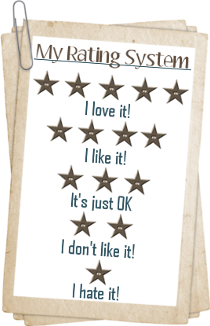
I've been writing for forty years and have made it a habit to clip articles or record notes about interesting things I read or hear about. They sit about like dormant seeds, ready to germinate if you fertilize them with good characters and plot. One such story I saved was an obituary of Robert Graham who died in 1997. Graham was an American entrepreneur who made millions designing the first plastic eyeglass lenses. He was also a eugenist, an out of favor theory that suggests that "nature is more important than nuture," that it is our genes that make us predominantly who we are, not our upbringing. Graham became most famous perhaps for creating what was colloquially called "the genius sperm bank," a repository of sperm provided by Nobel prize winners. His life story led me to do more research on eugenics, then genetics in general. And, with daily headlines describing a world entangled in an apparent never ending battle with terrorism, I wondered why we couldn't use genetic engineering to create a chimera, a soldier part animal, part human, to fight our battles and put an end to the atavistic process of bloodying our our best and brightest young people on battlefields. It's science fiction but not so much a fantasy that it couldn't soon fall into the realm of science fact. And, then the story of FORTY-EIGHT X : The Lemuria Project unfolded.
Mr. Pollacks Biography
My life has been a merry-go-round. There have been plenty of ups and downs. I've changed horses a lot. But, I'm enjoying the ride, still trying to catch that brass ring that defines me as a person - and as a writer.
Let me begin in college, at the end days of one of the many schools I attended. In 1967, I was a cadet at the United States Air Force Academy. I had dreams of becoming a "jet pilot," an adolescent fantasy perhaps, but nonetheless moving toward fruition. I could arch back my shoulders, suck it in, and spit shine with the best of them - but still I was not very "military." It was the height of the Vietnam War. Like many young people at the time, I became disenchanted with that war; decidedly not a good mind set for someone setting out on a military career. So, I left the Air Force Academy and went off to Penn State where I quickly got my bachelor's degree. Shortly after graduation, I decided on another career. I would become a filmmaker. I left my childhood home in Philadelphia, and after a brief tear-gassing experience at the 1968 Democratic National Convention in Chicago, I arrived in California where I eventually received my master's degree in film from Stanford. There, I made several documentary shorts. One was called "Some of My Best Friends are Bottomless Dancers." That lascivious title and a few film festival prizes led to my being accepted as a writing-directing fellow at the new American Film Institute in Los Angeles.
My opportunity to become a "professional," read paid, writer came after I spent a summer traveling with east coast carnivals, researching another documentary on "carnie folk." During that summer, I came to know nearly every "freak" in the United States - the two-headed man, the fat lady, the pin cushion man, midgets and giants. As a result, when a friend was hired by Roger Corman to write the remake of a movie called "Freaks," I was hired as the casting director. That picture was never made but after showing the Corman brothers some of my writing, I was given the opportunity to write the remake of John Huston's 1950 film "Asphalt Jungle" and turn it into a contemporary "black" film. That was the era of black exploitation pictures like "Shaft" and "Cleopatra Jones." And that's how, in 1972, I became the white "black exploitation" writer-director of the MGM film "Cool Breeze." The film wasn't a blockbuster nor critically acclaimed, but it was a respectable first effort. I thought I was on my way in Hollywood and during the making of that first film, I met my wife, Margaret. Even though I'm no longer the "famous" Hollywood writer-director she thought she was marrying, she's stuck with me ever since. Anxious to direct again, I jumped at the next offer that came my way. It was a grave misjudgement. That venture was a film called "This is a Hijack" which I ignobly claim as being one of the "top ten" worst pictures in the history of cinema. Everything that could go wrong in making a picture, did on that one. There's a movie or a novel in that story. As the cliché goes, I couldn't get arrested after that as a Hollywood director - or as a writer. After mulling over my options in the film business, I made another drastic career change. I became a doctor.
In 1980, I graduated from the University of Oklahoma Medical School and after a brief residency at Los Angeles County USC Medical Center, I began working as an emergency physician. I am still, to this very day, an "ER doc." But I have continued to write - several prime time television dramas like "Trapper John, M.D." and "Hotel," magazine short stories, several unproduced screenplays, and almost ten years of columns for the Ventura County California STAR newspapers (Biography stories, Travel Stories, and Medical stories).
I'm working on a new career now as a novelist with my first book, the contemporary science fiction thriller "FORTY-EIGHT X: The Lemuria Project" published by Medallion Press in December 2009.
Click here to order your copy of Forty-Eight X: The Lemuria Project today.






















1 comment:
Lori,
I'm pleased to be on your "Reading Corner" this week and hope your visitors will be encouraged to read FORTY-EIGHT X. It's not only thriller with romance and action, it's a thought provoking tale involving the condundrum of how to deal with eugenics, genetic engineering, and animal experimentation. I would very much like to hear from readers who can reach me at my website: www.BarryPollack.net.
Best regards,
Barry Pollack
Post a Comment